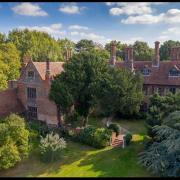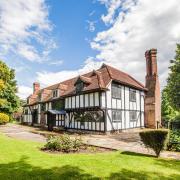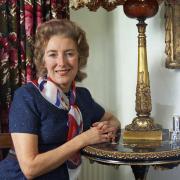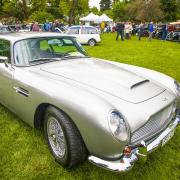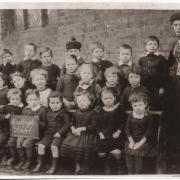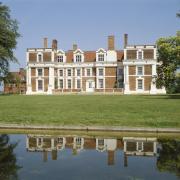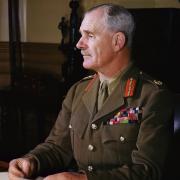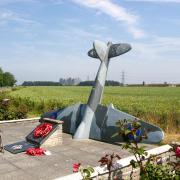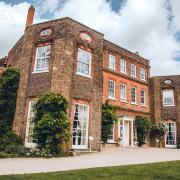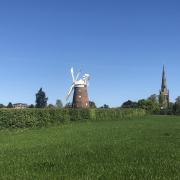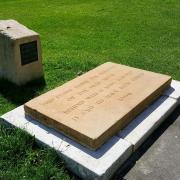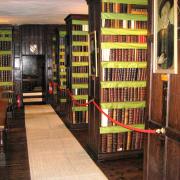It’s a year of platinum anniversaries. As we celebrate the 70th anniversary of HM Queen Elizabeth II acceding to the throne, we also look back fondly over 70 years of Essex Life. Decade by decade, Stephen Roberts will be delving into the historic events that have shaped the county since our launch in 1952. Let’s start with the fifties...
On the world stage
It’s fair to say that we didn’t bound into the 1950s like an exuberant gazelle on a spring morn. It was still the age of austerity following World War II. The London Olympics in 1948 had been dubbed the Austerity Games, and wartime rationing continued right up to 1954. It was not exactly an age of plenty.

Essex boys were fighting overseas too; the Essex Regiment participating in the Korean War (1950-53) whilst the Suez Crisis (1956) was a wake-up call that the UK was perhaps no longer the independent big-hitter that it had once been. The establishment of the European Economic Community, a.k.a. the Common Market, in 1957, suggested a more collaborative approach to come, although none of us was aware of the disagreements that would be caused by our future membership.

There was disaster at home as well. The North Sea flood of January/February 1953 was the worst storm surge on record for the North Sea, leaving parts of south and east Essex inundated, including Canvey Island and Jaywick, whilst the Dagenham East rail crash (January 30, 1958) left ten dead and 89 injured.
It wasn’t all doom and gloom though, as we embarked on our second great Elizabethan age with HM Queen Elizabeth II acceding in 1952, then having that glorious coronation the following year.
Getting political
Having been at the helm from May 1940 until war’s end, it must have come as a seismic shock to Winston Churchill and his Conservatives to not receive a vote of confidence from the electorate in 1945. The people were more interested in rebuilding and winning the peace. When the 1950s dawned, we therefore had a Labour government – although this only lasted until 1951 when the Conservatives were returned to power, and so it would stay for the rest of the fifties.

The last of the decade’s prime ministers was Harold Macmillan, who boldly asserted in 1957 that the nation had ‘never had it so good’. The austerity years were receding and the Swinging Sixties were not far off. Although Essex’s constituencies would mostly reflect the national vote during the ’50s, there were exceptions with the likes of Romford (usually) and Dagenham and Thurrock (always) bucking the trend and returning Labour MPs.
A time of change
The impact of WW2, the most destructive war in human history, was felt long after it had ended. London’s housing stock had been severely depleted by wartime bombing and new estates urgently needed to be provided for those rendered homeless or whose dwelling was barely habitable. The new towns of Harlow and Basildon had only just been created in 1949 as a direct response to this human catastrophe of overcrowding. The genesis was the New Towns Act of 1946, which created eight towns in the south-east, two of which were Harlow and Basildon.

Harlow’s master plan followed in 1947, courtesy of Sir Frederick Gibberd. The planned town would see Britain’s first pedestrian precinct and the first modern-style residential tower block, The Lawn, which was constructed in 1951 (the same year that Basildon’s first house was completed) and is now Grade II listed. Listed status no longer implies a Jacobean or Georgian mansion. Gibberd also contributed Harlow’s new town hall, a landmark built in 1958, but this was replaced by a new civic centre in the noughties; a sure sign that even modernist architecture sometimes has a shelf life.
Ford had become a fixture in Essex between the wars with the opening of the Dagenham vehicle assembly plant, which had grown to employ a high water mark of some 40,000 employees by 1953. The reduction in our armed forces after the war and gradual withdrawal from empire saw military closures such as the Warley (Brentwood) Army base and Essex Regimental depot, which closed in 1959, with much of the site also being redeveloped for Ford for its UK HQ. Although most of the barracks has been demolished, some army heritage survives such as the old Grade II listed Essex Regiment Chapel.
Essex on screen
It’s interesting to observe how Essex was depicted in popular culture at a time of such massive change in that immediate post-war era. One film that portrayed life in an Essex community was Time Gentlemen, Please! (1952), which was set in the fictional small town of Little Hayhoe. A comedy based around a hapless ministry’s attempt to evaluate UK employment rates, Little Hayhoe comes to prominence when it’s found that there’s just one unemployed person in a town of 2,000, an unemployment rate of a barely believable 0.0005%. I’m not going to say too much for fears of a ‘spoiler alert’ but save to say that Little Hayhoe, boasting the best employment rate of any, is expecting a visit from the prime minister. It’s up to the townsfolk to find a way of employing that odd man out.

My wife loved Quatermass II (1955) when she was a gal, racing in to see her mates at school to discuss the previous night’s episode. Well, the TV series, the second in a 50s trilogy, was filmed at Shell Haven Oil Refinery near Corringham. Three different actors played Bernard Quatermass across the three series with experienced thespian John Robinson picking up the role in series two.
Very sporting
After the Austerity Games, the next Summer Olympics was held in Helsinki in 1952. British medallists included Jean Pickering from Forest Gate, who won bronze in the 4 x 100 metres relay. British athletes were more successful at the Melbourne games in 1956, when two local boxers returned with medals, Terry Spinks, born in West Ham, who brought home the flyweight gold, and Nicky Gargano, born up the road in East Ham, who returned with a welterweight bronze. Hats off to another East Ham boy, track star Derek Johnson, who brought two medals home, silver in the 800 metres and bronze in the 4 x 400 relay.

I love my footie, and in the early 1950s there was one team making headlines in the amateur game: Walthamstow Avenue. In the 1951-52 season ‘Electric Avenue’ won the old FA Amateur Cup final at Wembley, beating rivals Leyton 2-1 in front of a full house of 100,000. The following season saw them embark on a headline-grabbing FA Cup run to the 4th Round Proper, where they drew with mighty Manchester United at Old Trafford before losing a replay at Arsenal’s Highbury Stadium. Westcliff-on-Sea-born Trevor Bailey played in all those epic matches, as well as being an Essex and England cricketer.
Comings and goings
A number of distinguished people were born in Essex in the ’50s. Antonio Pappano (b.1959, Epping) is musical director at the Royal Opera House and due to become chief conductor of the LSO in 2024, whilst Bramwell Tovey (b.1953, Ilford) is also a conductor/composer. The acting profession is represented by triple Olivier Award winner Alex Jennings (b.1957, Romford) and Fryerns schoolboy Nicholas Farrell (b.1955, Brentwood), a star of stage and screen. Authors have included the late Jill Barklem (1951-2017, Epping), the writer and illustrator of the Brambly Hedge series of children’s books, and Michael Coren (b.1959, Walthamstow), the author, biographer and talk-show host.

Finally, in the world of sport there were two footballers who made the grade. Winger Peter Taylor (b.1953, Rochford) began his playing career at Canvey Island and Southend and would go on to win four full England caps before enjoying a lengthy managerial career, which included stints at Southend and Dagenham & Redbridge. Midfielder Alan Curbishley (b.1957, Forest Gate) would play for and manage West Ham.
We also had to say some sad farewells during the decade. Archibald Wavell, 1st Earl Wavell (1883-1950, Colchester) was a senior army officer who served in both world wars, whilst Sussex boy Sidney Godley VC (1889-1957) was the first private to be awarded the Victoria Cross (Battle of Mons, 1914). He’d finish his life in Essex, dying in Epping Hospital on June 29, 1957, aged 67. He was buried with full military honours in Loughton, his last residence. Warwick Deeping (1877-1950, Southend) was a novelist and short-story writer who wrote more than 60 books.
You may also like the history of Epping Forest: https://www.greatbritishlife.co.uk/lifestyle/heritage/queen-elizabeths-hunting-lodge-epping-forest-8944702





